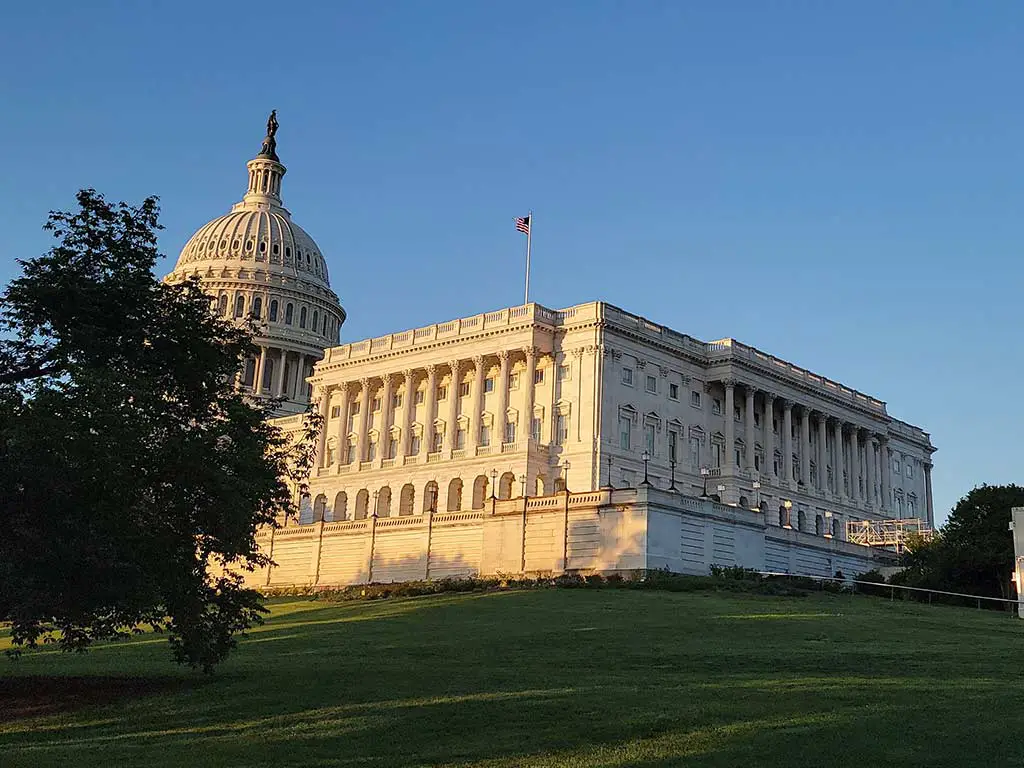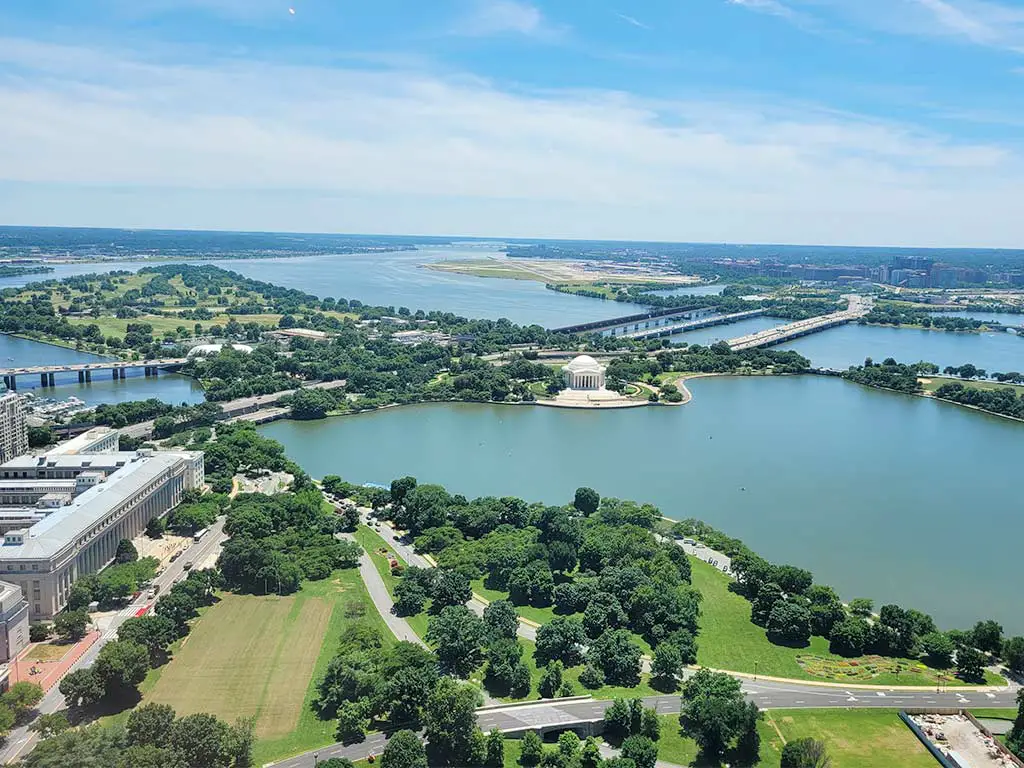Curious about Washington DC’s earthquake history? Imagine the ground beneath iconic landmarks like the Washington Monument and the National Cathedral trembling.
In 2011, a magnitude 5.8 earthquake centered in Virginia sent shockwaves through the eastern US, causing significant damage to historical structures in the nation’s capital, over 80 miles away.
Despite not being the strongest quake, it was one of the most widely felt in North American history, highlighting the region’s vulnerability to seismic events.
As we reflect on past tremors, it’s crucial to stay informed and prepared for potential future earthquakes in the DC area.
Washington DC Earthquake History Overview

Washington, D.C., has experienced its share of seismic activity, although it is not typically known for earthquakes.
Here’s an overview of the earthquake history in the region:
Major Historical Earthquakes
Eastern United States, including Washington DC, has faced significant historical earthquakes, with notable events shaping the region’s seismic history.
The largest historical earthquake in the area struck Charleston in August 1886, resulting in the loss of more than 100 lives and extensive building damage.
The earthquake, felt throughout the central and eastern US, led to significant post-earthquake investigations, marking a significant moment in seismic research in the region.
In the aftermath of the 2011 Mineral earthquake centered in Virginia, questions arose about the likelihood of a repeat earthquake similar to the historic 1886 event in Charleston.
Recent Seismic Events
Recent seismic events continue to highlight the seismic activity in the eastern United States, underscoring the need for preparedness.
The 2017 magnitude 4.1 earthquake in Delaware and the 2020 Sparta NC earthquake demonstrate that unexpected seismic events can occur across the eastern US.
These events reinforce the importance of earthquake readiness and awareness, urging residents to stay informed and prepared for potential seismic occurrences in the Washington DC area and beyond.
Understanding Earthquakes in Washington DC

While Washington, D.C., is not typically associated with frequent or severe earthquakes, the region has experienced notable seismic activity over the years.
Understanding the history and characteristics of earthquakes in this area provides insight into their potential impact and the measures in place to mitigate their effects.
Geological Factors
When understanding earthquakes in the Washington DC area, it’s crucial to consider the geological factors that contribute to seismic activity.
Washington DC is located in a region where multiple tectonic plates interact, making it susceptible to earthquakes despite being far from the boundaries.
This geological setting means that even intraplate earthquakes, like the 2011 Mineral earthquake, can occur and have significant impacts on the area’s infrastructure and buildings.
By analyzing the historical seismic data of Washington DC, researchers can identify patterns and trends to better predict and prepare for future earthquakes in the region.
Understanding the frequency and intensity of past seismic events is essential for implementing effective mitigation strategies and ensuring the safety of residents.
Recognizing Fault Lines
Recognizing fault lines is essential for earthquake preparedness in Washington DC. While the region is not as seismically active as areas near tectonic plate boundaries, fault lines can still pose a threat.
Understanding the location of fault lines and how they may generate seismic activity is key to developing effective earthquake response plans and ensuring the safety of residents in the event of a significant earthquake in the region.
By studying historical earthquake data and mapping fault lines in Washington DC, experts can assess the level of seismic risk accurately.
This information is crucial for implementing preventive measures and emergency protocols to minimize potential damage and protect the population during a seismic event.
Significant Impact on Landmarks

The most significant recent earthquake affecting Washington, D.C., was the 5.8 magnitude event centered near Mineral, Virginia, on August 23, 2011.
This earthquake had a profound impact on several iconic landmarks in the nation’s capital:
Damage to National Cathedral and Other Historical Sites
The Washington Monument, the world’s tallest stone structure, and the Washington National Cathedral were significantly impacted by the 2011 earthquake.
Surveys revealed cracks near the top of the Washington Monument, leading to its closure for repairs until May 2014.
The earthquake also severely damaged three of the four pinnacles (corner spires) on the central tower of the Washington National Cathedral.
Additionally, the cathedral’s flying buttresses were cracked, requiring a substantial amount of funds for evaluation, stabilization, and repair of its limestone exterior.
Restoration and Funding Challenges
Following the earthquake, several historical sites in Washington DC faced restoration and funding challenges.
The Washington National Cathedral, lacking earthquake damage coverage in its insurance policy, needed to raise millions of dollars to fully assess the damage and carry out stabilization and repair work.
The Smithsonian Castle incurred damage to five decorative turrets, while the Embassy of Ecuador suffered structural damage, including three collapsed chimneys and cracked internal walls.
The need for extensive repairs and restoration underscored the importance of securing adequate funding to preserve these iconic landmarks.
Preparing for Future Earthquakes
While Washington, D.C. is not typically associated with frequent or severe earthquakes, the 2011 Mineral, Virginia earthquake underscored the importance of preparedness.
Here are key strategies and measures for preparing for future earthquakes in the region:
Government and Community Initiatives
To enhance earthquake preparedness in Washington DC and its surrounding areas, government and community initiatives have focused on increasing the density of seismometers.
Recognizing the importance of early warning systems, the USGS assumed operations of the Central and Eastern United States N4 network in 2019.
This network comprises stations strategically placed to monitor ground motions with improved precision and timeliness, enabling better preparedness for future seismic events.
Public Awareness and Safety Measures
Public awareness and safety measures play a crucial role in minimizing the impact of earthquakes in the Washington DC region.
Educational campaigns and drills aim to educate residents on earthquake safety protocols, including proper responses during and after a seismic event.
By promoting awareness about evacuation routes, emergency supplies, and shelter locations, individuals can be better equipped to protect themselves and their communities in the event of a future earthquake.
Frequently Asked Questions
When was the last time Washington, D.C. had an earthquake?
The last significant earthquake in Washington, D.C. occurred on August 23, 2011, with a magnitude of 5.8 centered near Mineral, Virginia. This earthquake was felt across more than a dozen states, including the District.
Is Washington, D.C. prone to earthquakes?
While not frequent, Washington, D.C. can experience earthquakes due to its geological location. The city can also feel the impact of earthquakes happening in nearby regions.
What caused the 2011 earthquake in Washington, D.C.?
The 2011 earthquake in Washington, D.C. originated from a fault junction near Mineral, Virginia. Research suggests that this earthquake was felt from Georgia to Canada.
How does the government in Washington, D.C. prepare for earthquakes?
Washington, D.C. government initiatives focus on increasing the density of seismometers and implementing early warning systems through the USGS network.
Conclusion
Washington DC’s earthquake history serves as a reminder of the region’s susceptibility to seismic activity. Understanding fault lines is crucial for effective earthquake preparedness.
The 2011 earthquake left lasting impacts on iconic landmarks, emphasizing the need for restoration and funding support.
Initiatives like increasing seismometer density and early warning systems demonstrate proactive measures for enhancing preparedness. Public awareness campaigns play a vital role in educating residents on safety protocols.
By prioritizing preservation efforts and investing in seismic safety, Washington DC can better mitigate the impact of future earthquakes and safeguard its historical treasures.




Allison Brice